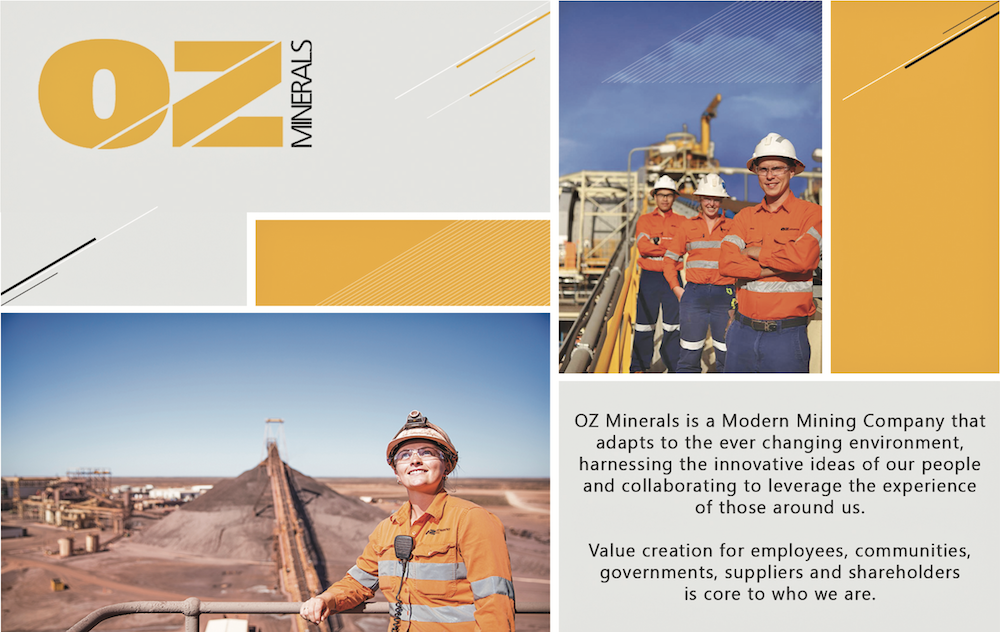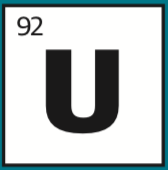
Power for the people
With less waste and less risk to the environment, uranium is not just the energy of the future: in today’s overly polluted world, it is also shaping up to be part of a solution to a pressing global problem. Uranium gets a bad rap. Some of it is true. But the raw math of risk versus reward proves it has the power to save the world. And South Australia’s ideally positioned to corner the market. It’s all about energy density. And waste density.
Take 1kg of uranium. It can produce 49,600 kWh of electricity. It leaves behind 1kg of self-contained waste. After 500 years, 95 per cent of its radioactivity decays away.
With coal, you need 24,800kg for the same output. This emits 40,000kg of carbon dioxide. Not to mention arsenic, mercury, lead, sulphur dioxide and nitrogen oxides. Most are dumped in the air, and never lose their potency.
South Australian Chamber of Mines and Energy president Greg Hall has joined with energy consultancy Frazer-Nash business manager Marc Lyell and Dr Benjamin Heard to detail their case.
Uranium is a part of a solution to a pressing global problem. And a quirk of geology makes this an opportunity for South Australia’s high-skilled economy.
“We worry a lot about the uranium side of things. Yet it’s eminently manageable and in small quantities” Lyell suggests. “With most of our power coming from coal, we emit gigatons of pollution, and that kills people. We can keep getting better at the way we use coal, but the truth is we can probably never catch it all – the scale is likely beyond us. We are going to need a better fuel”.
Meanwhile, our planet is overheating. And fossil fuels are the main source of the greenhouse pollutants flooding our atmosphere.
“For me, it’s uranium fuel that sits at the heart of fixing all this,” Heard says, “We can’t have the scale of change we need without the energy packed into this mineral.”
Meanwhile, nuclear technology is advancing at pace.
No longer do fission plants have to be enormous, expensive cathedrals of energy.
They’re being made more nimble to support wind and solar power.
And the mining of uranium itself has been simplified with dramatically reduced environmental footprints. They don’t have to be open-cut mines. Just a bundle of pipes.
Falling costs. Adaptable scale. Minimal – containable – waste.
After years in the wilderness, this mix has put uranium and modern nuclear fission back on the brink of a boom.
“We are in a situation of having highly skilled mining and radiation professionals in South Australia,” Hall says. “And we have a great endowment here in the form of the world’s richest deposit of uranium.”

ENERGY EFFICIENCY
It’s a matter of scale. It’s a scale that’s hard to comprehend.
“What people don’t generally grasp is that this is actually a transformative difference. It’s not an incremental change,” Heard says. “It’s such a dense energy source.”
Endless streams of coal-filled trains are needed to stoke coal-powered furnaces. Then there are the tailings dams. The dust. The smoke plumes. The maintenance.
“What we’re talking about with uranium is a single load of fuel coming out every couple of years that needs to be stored. In newer designs that’s once every seven years, or even every 20 years,” Lyell says.
The technology and science that produced Chernobyl and Sellafield have gone the way of the Ford Model T.
“Operators are getting more out of the fuel now than ever,” Lyell adds. “When the uranium fuel comes out of its initial run, it can be recovered, reprocessed and put back again and again. And, as a result, the longevity of radioactive waste can be greatly reduced.”
That waste can be placed in geologically stable disposal.
POWER OF RESILIENCE
Mountains of coal must be burnt each year to drive industry. Oceans of oil are vaporised to keep cars, trucks, trains, ships and aircraft moving.
Almost all of it must be carted continuously over great distances. And the vulnerability of such extended supply lines has been highlighted like never before by the COVID19 pandemic.
“Let’s talk about uranium,” Lyell says. “In the near future, even if you’re talking about a remote area operation, you can soon have a little encapsulated reactor that’s fuelled up for two to twenty years when it arrives.”
Even in bigger urban power stations, the quantities remain minuscule compared to coal.
“You’re talking about one truck every 12-18 months to deliver new fuel. That’s it.”
Such is the economy of scale that small modular reactors now appear viable even for remote – heavily automated – resource facilities. These reactors are not new. About 150 of them are plying the world’s oceans, powering submarines and aircraft carriers.
Now the US federal regulator is in the process of approving micro-reactors for regional communities. The 1.5MW fission batteries produce the power of a typical wind turbine. About the size of two tennis courts, it can operate every hour of the year for 20 years.
“So you can bring decades worth of power to pretty much any location and have all of your fuel there all the time,” Heard says. “Uranium offers a great deal of freedom and security to nations in a way other fuels can’t match. And it all comes back to its energy being so dense.”
ELECTRIFYING OPPORTUNITY
“We need deep decarbonisation, going beyond the electricity grid and getting right through the economy,” Heard says. “There’s going to be enormous growing demand for electrical power. And we can’t get away from the fact that there will continue to be a huge requirement within industry and transport for liquid fuels.”
Nuclear energy offers a means of splitting hydrogen out of water, without an associated carbon cost. And other energy-intensive processes, such as large scale desalination, may soon become a necessity.
All are going to drive worldwide demand for clean, reliable, baseload power.
At the heart of it all is a ratio of one kilogram of uranium equalling 24,800kg of coal.
“Uranium’s not perfect, but it’s pretty damned close to it. And in terms of meeting energy needs with minimal pollution – wow,” Heard says.
“Uranium is an enabler for all kinds of things because it’s so much more compact,” Lyell adds.
Hall argues its power is evident in the numbers: “Take the energy equivalent of uranium produced for society, and the waste produced by that. Then take the equivalent amount of coal required to feed society the same amount of energy. Here’s the list of wastes. Here’s the list of hazards. Here’s how long those hazards persist. It’s a simple comparison. And uranium wins every time.”

 URANIUM
URANIUM
Uranium is born in supernovas. Which is why it’s pretty much everywhere.
The naturally radioactive mineral is in rocks and seawater, as well as our teeth and bones. It’s just that it’s usually in very low concentrations.
Deposits were mainly formed by groundwater leeching the dense metal out of rocks and depositing it in ancient aquifers. It’s actually one of the less radioactive minerals, which is why it takes so long to decay.
That radioactivity can be used to generate heat at the heart of a nuclear reactor.
Depleted uranium – about 40 per cent less radioactive than natural uranium – is so dense, it is used to make tank armour and bullets.
Women in resources
Today’s resources industry is driving equality and breaking down barriers on two fronts: it’s not all about the men and it’s not all about the hi-vis. Once a profoundly masculine domain, the industry is now attracting a large number of women into its fold thanks to the interesting and challenging roles on offer: from adventuring underground to working with exciting and colossal technologies and equipment, to travelling out in the field studying environmental sustainability, to sitting in the office performing planning, legal or project management roles. Such career diversity and security is driving the future of the resources industry. Meet four women who are embracing these opportunities with both hands ...